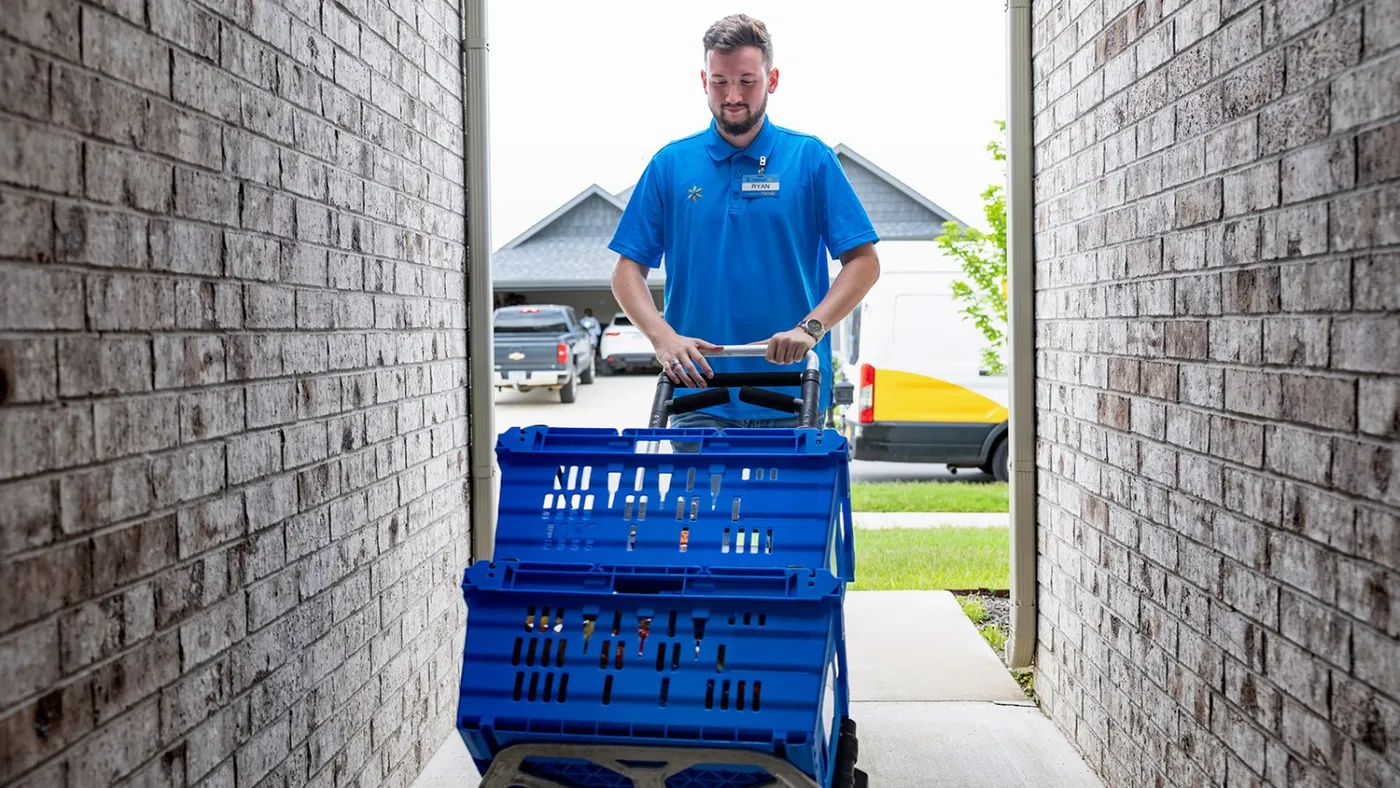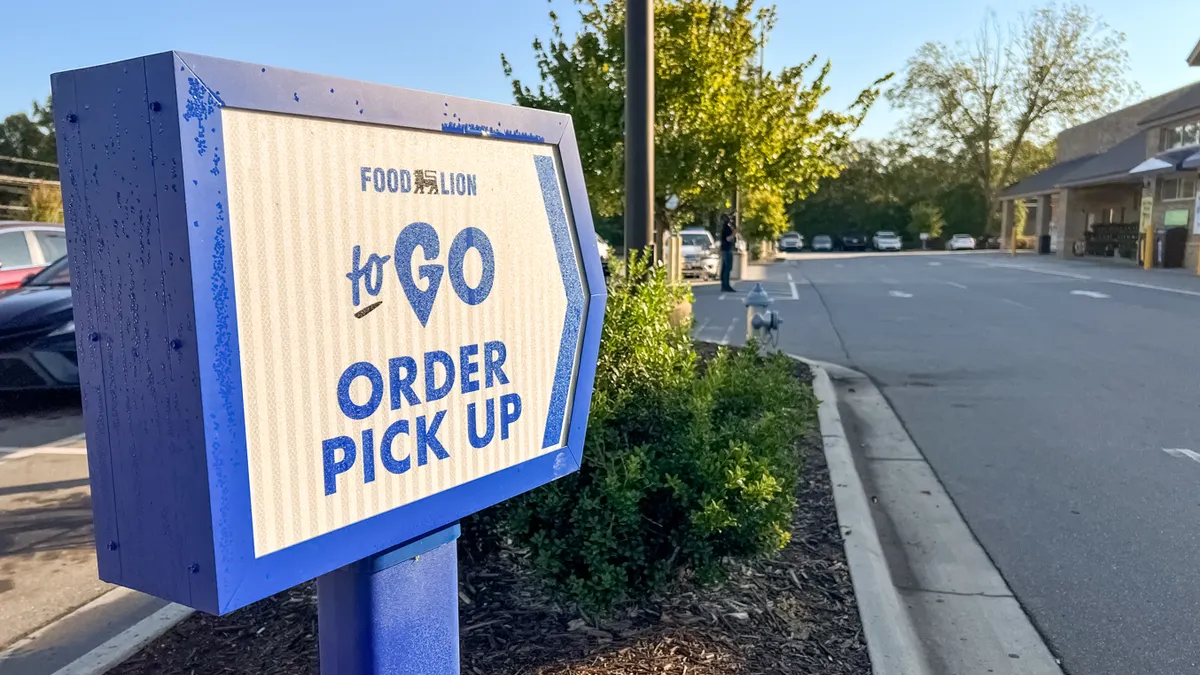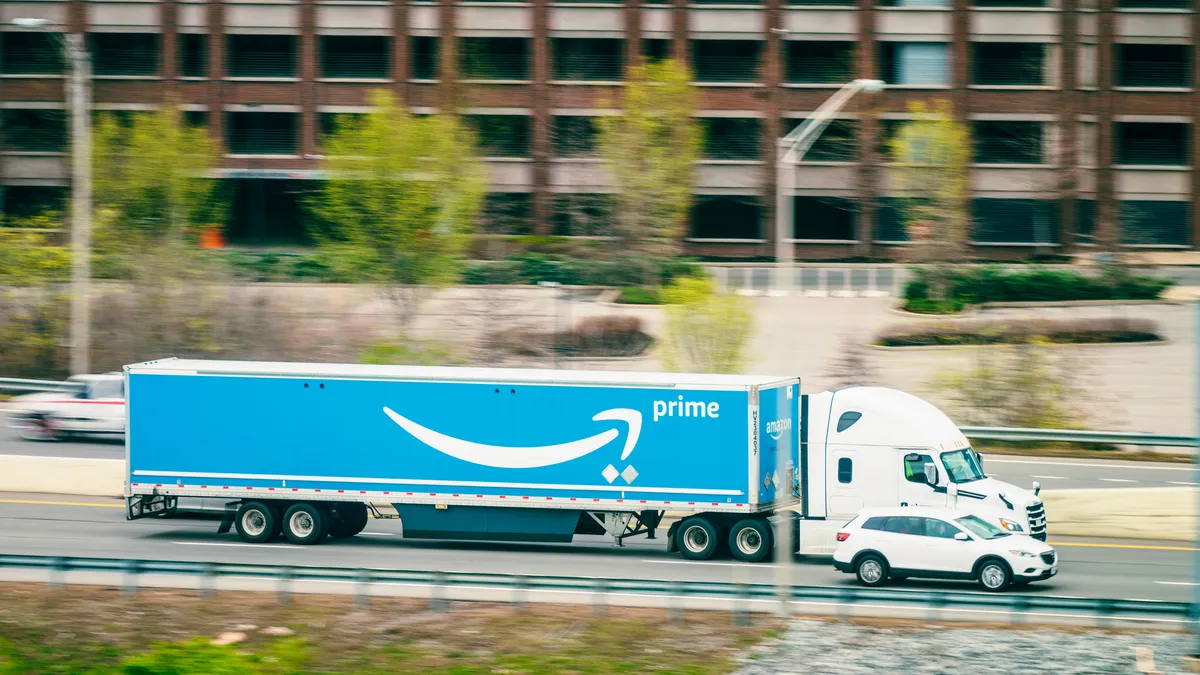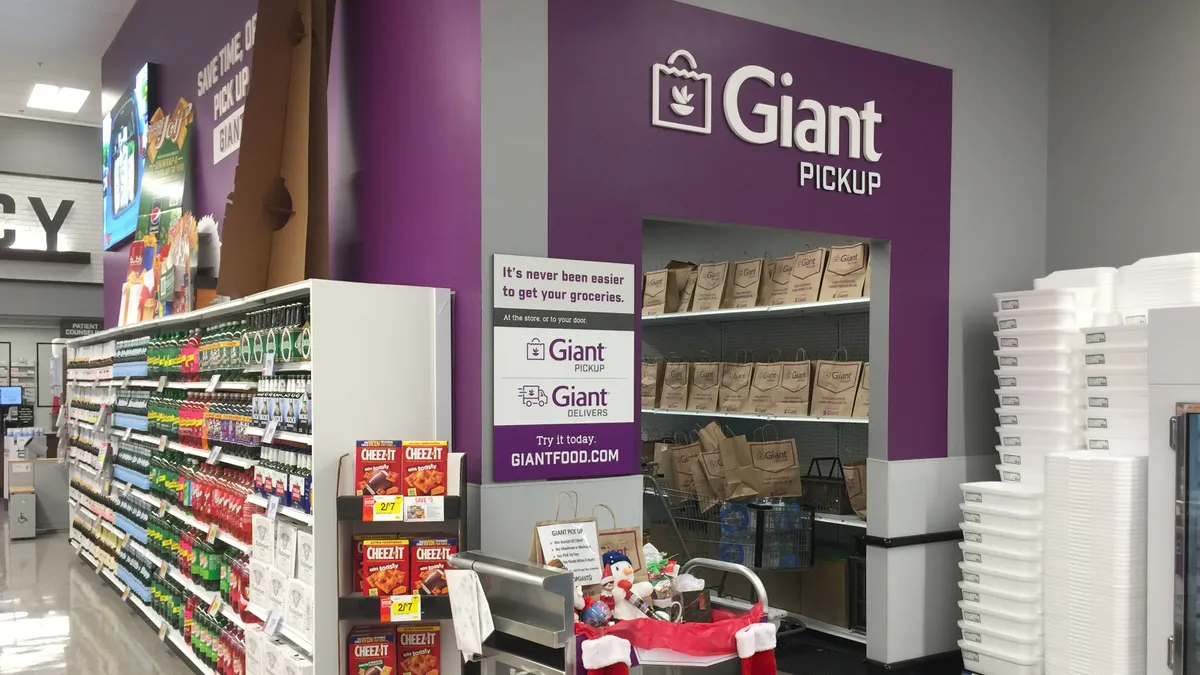To call a spade a spade, traditional grocers can’t build up an e-commerce business to rival Walmart’s. And it’s not something they should attempt, experts say.
Walmart’s scale, ability to capitalize on speed and convenience, and blended online and in-store experience have grown stronger in recent years. So strong, that the retailer anticipates online sales turning a profit this year with e-commerce already in the black for its first quarter.
Back in late 2021, supermarkets had an 800 basis point lead over Walmart in e-grocery sales share in the U.S., according to data from Brick Meets Click and Mercatus. As of the fourth quarter of 2024, however, the standings are reversed, with traditional supermarkets lagging behind the mass retailer by 1,170 basis points.
Walmart has well surpassed supermarkets in U.S. e-grocery market share
“When Walmart is growing their share of online grocery that much, at some point competing retailers are not just fighting over online dollars — this is going to start coming out of their physical stores. And that should really scare people,” Gary Hawkins, founder and CEO of the Center for Advancing Retail & Technology, said during an April webinar.
Despite Walmart’s dominance, traditional grocers shouldn’t shy away from bulking up their e-commerce operations. Not only would backing down present Walmart with more online customers on a silver platter, but it would also allow the retail giant to snag more in-store shoppers from traditional grocers, experts said.
“It’s not a question of whether they should or shouldn’t [have e-commerce] — they have to,” said Matt Van Gilder, former director of e-commerce and digital experiences for SpartanNash. “And it’s not just competing with Walmart. It’s competing with Amazon, it’s competing with Costco, it’s competing with other traditional supermarkets that do digital well.”
Hunkering down on creative online content, personalization and community are within traditional and regional grocers’ reach to offer e-commerce that differentiates them from Walmart, experts pointed out.
After nearly 20 years with SpartanNash and eight years overseeing the company’s e-commerce operations, Van Gilder believes that grocers’ omnichannel shoppers are the industry’s “most valuable customers.” He added, “To remain competitive and set yourself up for long-term growth, you have to get into the omnichannel space.”
Where Walmart holds all the cards
The COVID-19 pandemic spurred a dramatic uptick in demand for quick delivery that retailers across the board worked to meet. Now, five years later, while many grocers aren’t touting the offering anymore, Walmart continues to flex its rapid delivery, leaning into high-tech capabilities like drones.
But even if retailers are feeling pressure to offer speedier delivery, experts advise letting Walmart take the win.
“I think trying to compete with Walmart or Amazon, even now, it’s crazy. [Shoppers] go on Amazon and get something delivered same-day from that fulfillment center. Trying to compete with that is not going to be a good use of money,” Van Gilder said.
Price is another area that remains particularly untouchable when competing against Walmart. So much so that if regionals attempted to offer Walmart-level pricing and free delivery, it would ultimately cost them more due to Walmart’s scale, according to Van Gilder.
Walmart’s immense scale doesn’t only pertain to its cross-country store presence and delivery zones, but its retail media reach as well, David Bishop, partner at Brick Meets Click, pointed out. Its reach uniquely allows the company to leverage in-store, online and in-app ad campaigns in addition to the retailer being more aggressive with presenting ads to its customers, he said.
“What we can tell based on our own independent analysis of retailers who are using or not using retail media on the online platform is that it does dramatically change the search experience and we see that in spades in Walmart more than anyone else,” Bishop said.
Taking pages out of Walmart’s playbook
Many of Walmart’s e-commerce tactics are not impractical for smaller retailers, and experts urge grocers to start replicating some of them.
Sources pointed to grocers’ apps, which are quickly becoming quintessential to the omnichannel shopping experience, as a way to hit key shopping elements. Regionals’ strongest play against Walmart is highlighting their locality, and this can be further underscored through a blended online and in-store shopping experience through an app, sources said.
Medium and smaller-sized grocers can better track who’s buying and, more importantly, who’s not buying on their digital platforms, Mercatus Chief Growth Officer Mark Fairhurst said, adding that understanding customer behavior and adjusting offerings around them will help minimize customer attrition.
“Personalization and presenting products that are highly relevant to the shopper in their online shopping experience will also help compete with Walmart,” Fairhurst said.
Bishop added that omnichannel personalization efforts can supplement a loyalty program, especially for local grocers who don’t historically have one. Initiatives like targeted promotions and customized deals help prove to customers that their supermarket of choice is engaged and in touch with them, he said.
Though competing with Walmart’s prices may be a losing battle, experts said that many shoppers are willing to make the tradeoff if grocers can provide a sense of value. Features like personalized search results, dynamic pricing and targeted promotional offers achieve this, Fairhurst noted.
Straightforward communication with customers is also effective, Bishop said. Whether advertising promotions or announcing new service features, these efforts from grocers are more impactful than forcing promotional and less relevant ads onto customers.
“Something that’s important to your customers is something worth talking about, especially if it helps create something that’s unique in the market,” Bishop said.
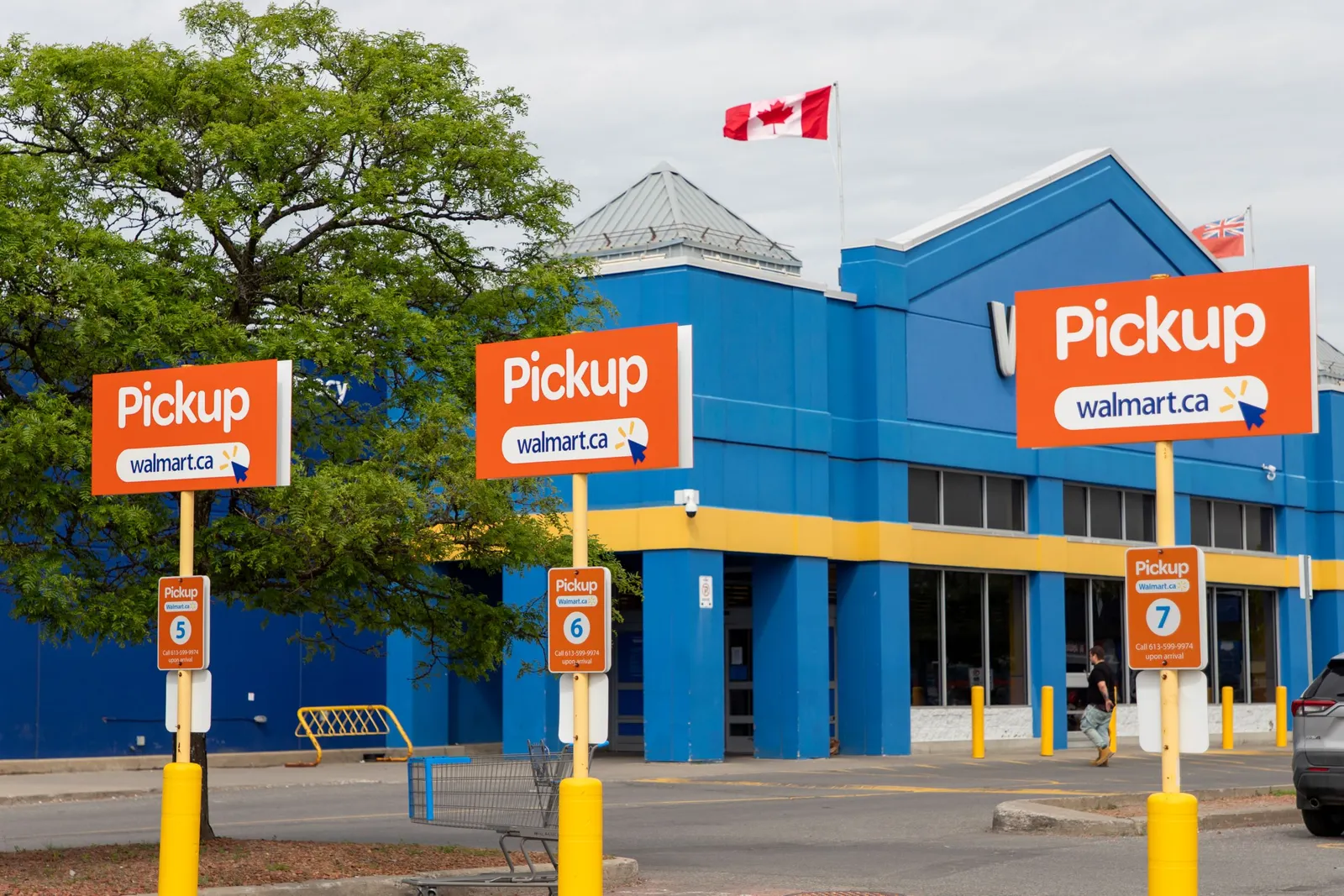
Pickup: The ace up grocers’ sleeve
Walmart was at the forefront of popularizing curbside pickup at the height of the COVID-19 pandemic. But launching its Walmart+ program in 2020 “really kicked delivery into overdrive,” particularly by waiving delivery fees for its members, Fairhurst said.
Walmart has been a driving force for the delivery segment’s ongoing market share gain for at least the past year, according to Brick Meets Click and Mercatus’ monthly reports — which is why now is the time for regionals to zero in on their curbside pickup offering, experts said.
Curbside pickup can help regional grocers strengthen ties with their surrounding community, establish trust and reliance by highlighting convenience, showcase value and build bonds through their staff, sources said.
Local supermarkets have the opportunity to build friendlier connections between their employees and shoppers that Walmart can’t replicate. Regional grocers are more likely to have the same few faces shopping for repeat pickup customers, cultivating a level of trust that can’t be matched by larger grocery players, according to Van Gilder.
“Being able to offer white glove, high-touch, personalized… service is where the regional, especially independent, can outpace big players,” he said. “Because they’ve got that community relationship and community connection with the customers.”
Though offering free delivery isn’t feasible for a majority of smaller grocery players, free pickup is — and a subscription program that includes this holds a lot of potential for regional grocers, according to Fairhurst.
“Create an annual subscription program, or even a biannual [one, and] offer it at a low rate of $49, but a customer could use pickup as often as they want. And then you would make up the labor expense on increased order frequency,” he advised.
Grocers’ next moves
As technology and the retail landscape evolve, there may be additional opportunities for grocers to close the omnichannel gap with Walmart.
Artificial intelligence is a tech-focused area traditional grocers would be wise to explore further, according to Fairhurst. With the price of implementing AI coming down, he said, the tech could be a way for grocers to level the playing field against Walmart.
AI has the potential to give regional grocers an edge in pricing optimization, inventory management and monetizing digital real estate. And, for more customer-focused uses, grocers can tap AI to produce better predictive search results, according to Fairhurst.
The placement of digital content is another area where regional grocers stand to improve, Fairhurst said.
When building out their online presence — whether on an app or website — retailers should aim to make it flexible for themselves, such as having the ability to move content blocks without the need for a developer or software engineer. This will allow them to better incorporate curated collections and limited-time offers into both their digital and in-store shopping experience, he said.
“Don’t underestimate the value that your brand, the investment you made in your brand, the longevity you have with your customer base, and mixing it smartly with the right technologies to engage your customer base will go a long way,” Fairhurst said.


